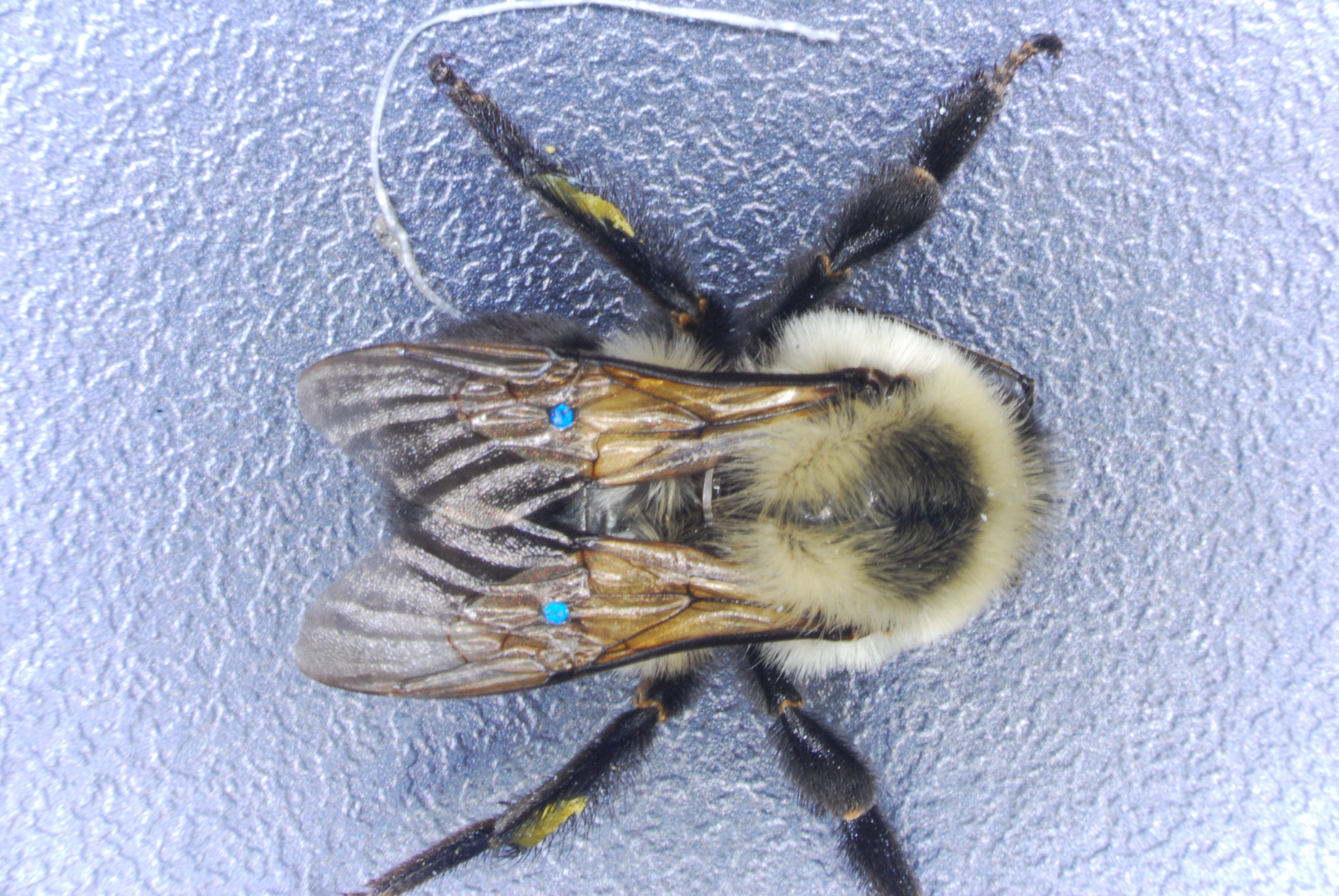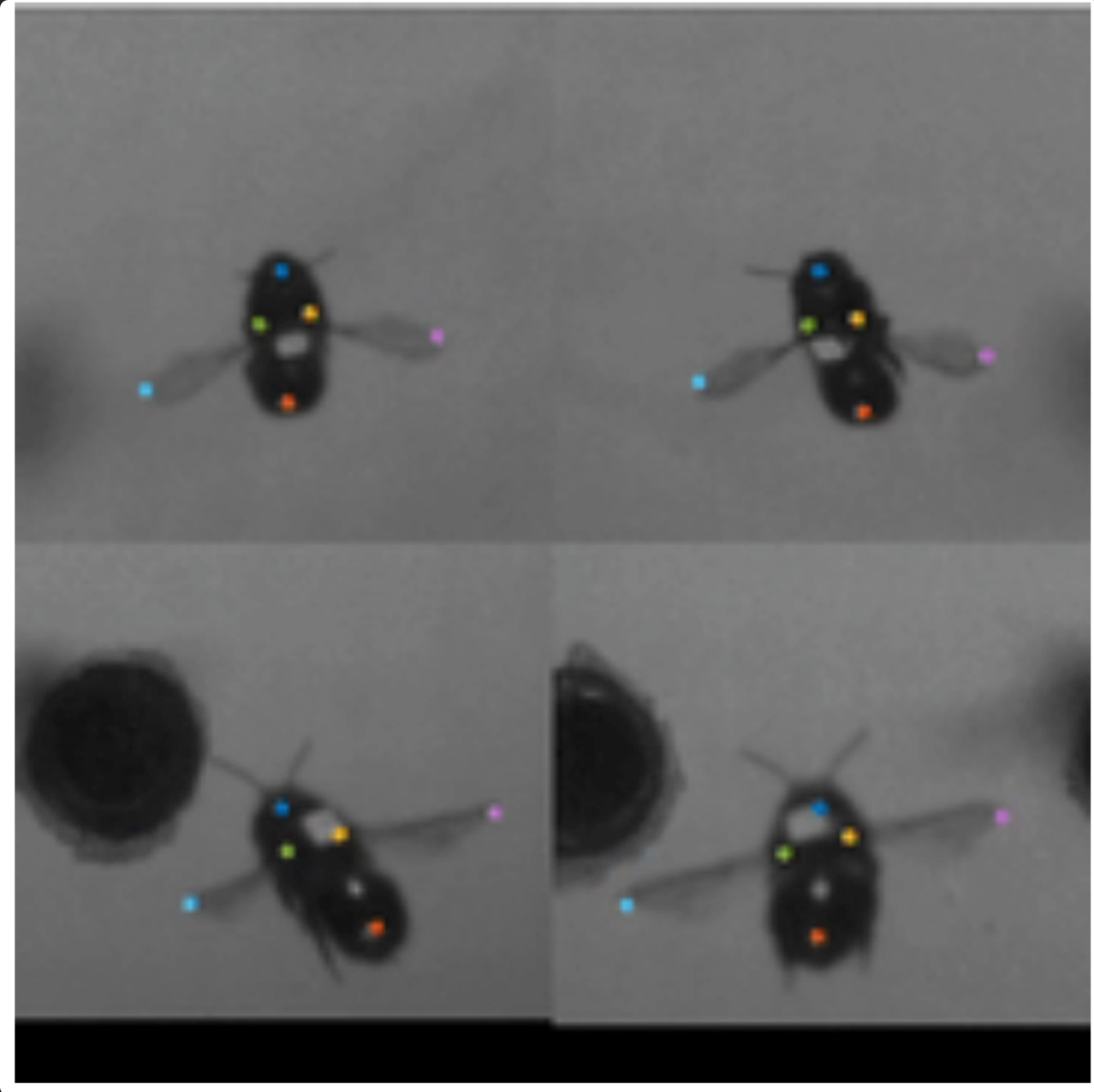Wings are the fundamental innovation that drove the diversification of flying insects, yet we know surprisingly little about their material properties and mechanical behavior. I began exploring the question of how passive bending of wings during flapping flight affects performance during my PhD, but I was unable to directly test the functional implications of wing flexibility because manipulating the stiffness of ultra-light wings without altering their mass was not possible at the time. Shortly after forming my lab, however, we began exploring insect wing resilin – a highly elastic protein found at the intersections between supporting veins – and found that because bee wings contain only a few of these flexible joints, we can significantly alter wing stiffness by splinting a single vein-joint with a piece of glitter while adding negligible mass. The development of this technique of reversibly altering wing flexibility in vivo has allowed us to begin testing how flexibility affects flight performance. We first found that flexibility from the leading to trailing edge increases peak force production in bumblebees, and we later showed that it also improves flight stability.
altering their mass was not possible at the time. Shortly after forming my lab, however, we began exploring insect wing resilin – a highly elastic protein found at the intersections between supporting veins – and found that because bee wings contain only a few of these flexible joints, we can significantly alter wing stiffness by splinting a single vein-joint with a piece of glitter while adding negligible mass. The development of this technique of reversibly altering wing flexibility in vivo has allowed us to begin testing how flexibility affects flight performance. We first found that flexibility from the leading to trailing edge increases peak force production in bumblebees, and we later showed that it also improves flight stability.
 Recently, a former postdoc, Andrew Mountcastle, and I received a new, collaborative NSF grant to use this technique to explore the effects of wing flexibility on multiple aspects of flight performance, including force production, stability, maneuverability, and energetic efficiency. Quantifying efficiency through in-flight respirometry is a challenging technique that we became proficient with over the past few years, and our first study yielded the surprising result that bumblebees can choose between different mechanisms of force production, allowing them to fly more efficiently when heavily loaded or fatigued. As part of the NSF-funded project, we will quantify the dynamic, three-dimensional shape of flapping wings in unprecedented detail, using a deep learning/artificial neural network approach (utilizing DeepLabCut). This approach, which was supported by a grant from NVIDIA, allows us to rapidly digitize wing shape changes, with a trained network processing >1500 images per second and reducing video analysis time from months or years to mere days.
Recently, a former postdoc, Andrew Mountcastle, and I received a new, collaborative NSF grant to use this technique to explore the effects of wing flexibility on multiple aspects of flight performance, including force production, stability, maneuverability, and energetic efficiency. Quantifying efficiency through in-flight respirometry is a challenging technique that we became proficient with over the past few years, and our first study yielded the surprising result that bumblebees can choose between different mechanisms of force production, allowing them to fly more efficiently when heavily loaded or fatigued. As part of the NSF-funded project, we will quantify the dynamic, three-dimensional shape of flapping wings in unprecedented detail, using a deep learning/artificial neural network approach (utilizing DeepLabCut). This approach, which was supported by a grant from NVIDIA, allows us to rapidly digitize wing shape changes, with a trained network processing >1500 images per second and reducing video analysis time from months or years to mere days.
We have also explored the role of flexibility in mitigating cumulative wing damage, which occurs  when rapidly flapping wings collide with obstacles such as plants. After noting that a flexible vein-joint in the leading edge of some wings buckles reversibly, we used the same glitter-splinting technique and imposed controlled, repeated collisions to show that this flexible joint slows the accumulation of wing damage in wasps. Additional studies in the lab have explored the effects of cumulative wing damage on flight performance, showing that wing damage in bumblebees reduces maximum acceleration when bees attempt to avoid collisions with moving obstacles, and reduces maximum acceleration and predation success in hunting dragonflies. Most recently, we have studied the effects of wing damage on flight stability in unsteady airflow and maneuverability during tracking flight.
when rapidly flapping wings collide with obstacles such as plants. After noting that a flexible vein-joint in the leading edge of some wings buckles reversibly, we used the same glitter-splinting technique and imposed controlled, repeated collisions to show that this flexible joint slows the accumulation of wing damage in wasps. Additional studies in the lab have explored the effects of cumulative wing damage on flight performance, showing that wing damage in bumblebees reduces maximum acceleration when bees attempt to avoid collisions with moving obstacles, and reduces maximum acceleration and predation success in hunting dragonflies. Most recently, we have studied the effects of wing damage on flight stability in unsteady airflow and maneuverability during tracking flight.